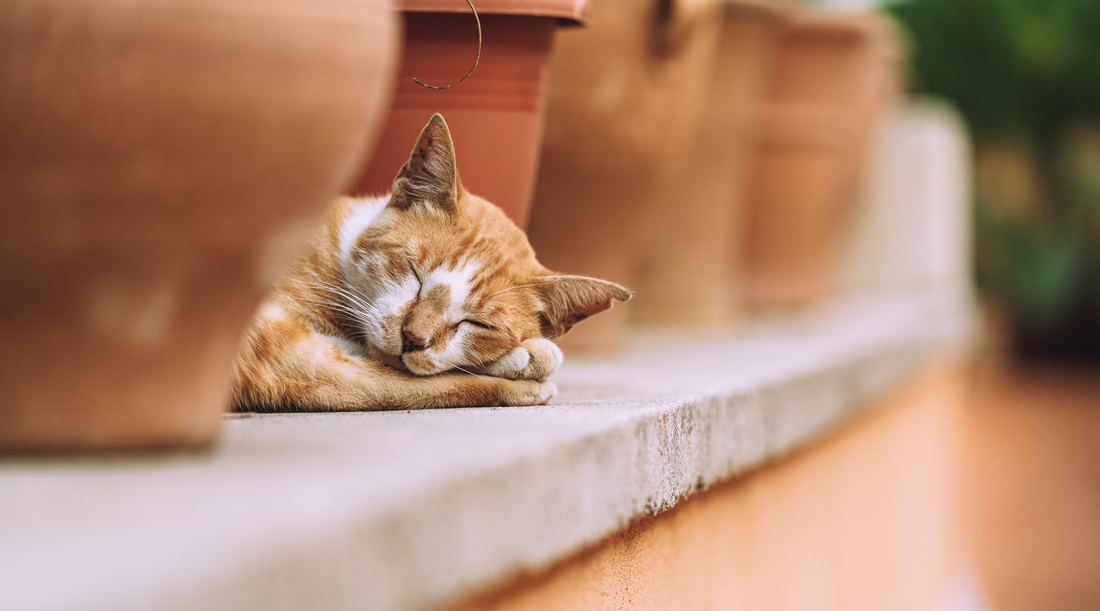
The Melodic Mystery of Feline Bliss: Why Do Cats Purr?
LifeSong StaffIn the gentle vibrations of a cat's purr lies a symphony that resonates with our hearts, filling the air with an inexplicable tranquility. The enigmatic purring of our feline companions has long been a source of fascination and comfort, igniting an endless curiosity within our souls. Why do cats purr? This question leads us on a mesmerizing journey into the mystical world of feline behavior, where each purr is a whispered secret, a language of love and contentment.
QUICK ANSWER: Cats may purr when they are happy, as a coping mechanism for stress, to solicit food/attention, and to communicate with other cats. Scientists don’t know how exactly cats are able to physically purr, but most agree that the larynx (voice box) laryngeal muscles, and a neural oscillator are involved.
Different Reasons Cats May Purr
- Contentment and Comfort - At the heart of a cat’s purr lies a profound sense of contentment and comfort. It’s a sign that your feline friend is feeling safe and secure, expressing their happiness and relaxation. Whether nestled in your lap or basking in a sunny spot, the rhythmic purring is their way of communicating a sense of peace and satisfaction.
- Healing and Self-Soothing - The act of purring extends beyond a mere expression of happiness. Cats often purr when they’re injured or distressed, suggesting that the soothing vibrations may have a healing quality, aiding in self-recovery and alleviating pain.
- Communication and Bonding - Purring serves as a form of communication between cats and their human companions. It’s a subtle language that builds an emotional connection. When a cat purrs while being stroked or petted, it’s a testament to the bond they share with their human, a shared moment of intimacy and trust.
- Motherly Affection - Kittens are introduced to the gentle hum of their mother's purr from the moment they are born. It acts as a guiding beacon, a signal of safety and nourishment, fostering a strong bond between mother and offspring. Even into adulthood, cats might purr as a reminiscence of that motherly warmth and love.
The Science Behind the Purrs
Interestingly, the exact mechanics behind how cats purr aren’t entirely understood. Some studies suggest that it's the rapid contraction and relaxation of the cat's laryngeal muscles, which control the vocal cords, that create the distinctive sound. Others propose that it might involve the cat's blood flow, a process that influences the vibrations in the cat's throat and diaphragm. But beyond the physical aspect, the reasons behind why cats purr have fascinated scientists for decades.
When D Cats Learn To Purr? - Kittens learn how to purr when they are a couple of days old. Veterinarians think that this purring tells the mother that the kitten is okay and close by. It also indicates a bonding mechanism between the kitten and the mother.
Vibrations and Healing - Studies suggest that the frequency of a cat’s purr, ranging from 25 to 150 Hertz, might have therapeutic effects on bones and tissues, stimulating healing and repair. This hypothesis has sparked an intriguing understanding of the potential healing power of a purring cat.
Conclusion
Every cat's purr is a unique expression, a manifestation of their individuality and emotional state. While the scientific community continues to unravel the secrets behind this cherished feline behavior, cat owners are left to bask in the soothing melody that emanates from their beloved furry friends.
In every purr, there’s a tale of tranquility, love, and trust. It’s an emotional language that whispers comfort and companionship, echoing the unspoken bond between a human and their cherished feline companion. The purr, an elusive yet enchanting mystery, is a testament to the magic of the feline world and its captivating hold on our hearts.
